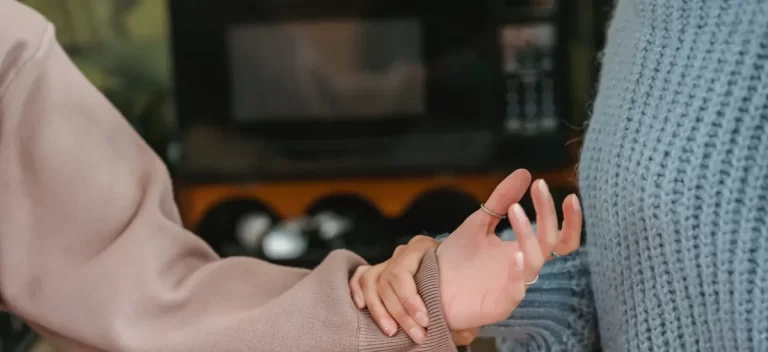Stepchildren Can Destroy Your Marriage – Here’s How to Avoid It!
The bond between parents and their children is one of the strongest relationships in life, and when a stepchild enters the picture, it can have a profound effect on the marriage. Stepchildren can be a source of joy and love to a blended family, but they can also be a source of tension, resentment, and conflict. In this blog, we will explore how stepchildren can potentially disrupt a marriage, and offer some tips for couples to help them navigate this complicated dynamic.
The effects of stepchildhood on marriages
Stepchildren can have a huge impact on marriages, and not always in a positive way. It’s a situation that can be difficult to navigate, as the parents must juggle the needs of their own children while trying to ensure that their stepchildren feel included. Unfortunately, there are many ways in which stepchildhood can sometimes ruin a marriage. Here are five of the major effects that stepchildhood can have on a marriage.
1. Power Struggles: The dynamics between stepchildren and stepparents can be complicated, and it’s not unusual for power struggles to arise. This can lead to a lot of tension in the marriage, and it can be difficult for both partners to remain supportive of each other when faced with this type of conflict.
2. Lack of Bonding: Stepchildren and stepparents often have a hard time developing a strong bond. This can be a source of frustration for the stepparent, who may feel left out of the family dynamic.
3. Financial Stress: Financial issues can be a major source of stress in a marriage, and the addition of stepchildren can be a major contributor to this stress. In some cases, the stepparent may be responsible for supporting the stepchildren financially, which can cause resentment and strain on the marriage.
4. Emotional Stress: The difficulty of managing emotions can be a challenge in any marriage, but it can be even more difficult when stepchildren are involved. The stepparent may feel like they are not the priority in the relationship, and this can lead to feelings of resentment and anger.
5. Jealousy: In some cases, one partner may feel jealous of the attention that the other partner is giving to the stepchildren. This can lead to arguments and a breakdown of trust in the marriage.
Stepchildhood can have a major effect on a marriage, and it’s important for both partners to be aware of the potential issues that can arise. If the couple is able to work together to find solutions to these issues, then it is possible to have a successful marriage even with stepchildren involved. However, if the issues can’t be addressed, then it may be best for the couple to consider alternatives such as counseling or even separation.
Causes of stepchildhood damage
Stepchildhood can have a damaging effect on any marriage. Stepchildren can often be the source of tension, arguments and even divorce. The process of blending a family together can be difficult and can cause a lot of stress for parents and children alike.
Understanding the underlying causes of stepchildhood damage can help couples better cope with the challenges and create solutions to help bring their family together. Here are five causes of stepchildhood damage:
1. Different parenting styles between two sets of parents: If each parent has a different parenting style the child can be confused. One child’s set of rules may be different than the other parent’s. This can lead to feelings of rejection or confusion, resulting in resentment and conflict in the marriage.
2. Unresolved issues of the past: If any of the parents have unresolved issues from past relationships, these can be transferred to the marriage and create conflict. Children may feel caught in the middle and can become resentful of the situation.
3. Lack of communication: If the couple is not communicating openly and honestly, the children can pick up on this and become resentful. This can create an atmosphere of tension and mistrust in the marriage, which can have a damaging effect on the relationships between the parents and children.
4. Incompatible expectations: If the expectations of the two sets of parents are not in sync, this can create tension and conflict in the marriage. The children may feel pressured to meet expectations that are too high, which can lead to resentment and hurt feelings.
5. Unresolved emotional baggage: If the parents have unresolved emotional baggage from past relationships, this can easily be transferred to the marriage and children. This can manifest itself in the form of emotional outbursts and arguments, creating an unhealthy environment for the children and damaging the marriage.
By understanding the underlying causes of stepchildhood damage, couples can begin to work together to create solutions that can help bring the family together. Open communication and understanding can help to create a supportive and loving environment in the marriage, while allowing the children to feel comfortable and accepted.
How to prevent stepchildhood damage in a marriage
Stepchildren can have a powerful impact on a marriage, especially when it comes to stepchildhood damage. Unfortunately, stepchildren often feel neglected and unloved, leading to feelings of resentment, anger, and bitterness that can divide a couple. If you’re married to someone with stepchildren, there are steps you can take to prevent stepchildhood damage in your marriage.
1. Establish a Relationship with Your Stepchild: The first step in preventing stepchildhood damage in your marriage is to establish a relationship with your stepchild. Take the time to get to know your stepchild and understand their unique needs and wants. This will help you develop a meaningful bond so that you can provide guidance, support, and love to your stepchild.
2. Communicate with Your Spouse: Open and honest communication is important in any relationship, and this is especially true in a marriage with stepchildren. Talk to your spouse about any issues that arise involving your stepchild so that you can work together to find solutions.
3. Set Boundaries: Establishing firm boundaries is crucial when it comes to preventing stepchildhood damage in your marriage. This means setting limits on when your stepchild is allowed to stay with you and how often. Additionally, make sure to provide clear expectations of respect and behavior.
4. Spend Quality Time Together: It’s important to make time for your stepchild so that they feel valued and included. Spend quality time together doing activities that your stepchild enjoys. This will help to strengthen the bond between you and your stepchild.
5. Show Unconditional Love: Showing unconditional love to your stepchild is essential in preventing stepchildhood damage in your marriage. Let your stepchild know that you love them, no matter what. Make sure to praise them for their accomplishments and give them words of encouragement when they’re having a tough day.
Following these steps can help to prevent stepchildhood damage in your marriage. By developing a strong relationship with your stepchild and communicating openly with your spouse, you can ensure that your marriage remains strong and healthy.
Types of stepchildren
Stepchildren can bring a unique dynamic to any family, but they can also cause tension and conflict between couples. In many cases, stepchildren can even lead to the breakdown of a marriage. It’s important to understand the different types of stepchildren and how they can potentially ruin a marriage.
The first type of stepchild is the biological child of one spouse and not the other. This type of stepchild often has difficulty adjusting to their new family dynamic. They may be jealous of the attention the other parent gives to their new spouse, or they may feel resentment towards the new parent. This can lead to tension and conflict between the couple, and can ultimately result in the breakdown of the marriage.
The second type of stepchild is the adopted child of one spouse and not the other. In many cases, adopted children have a difficult time adjusting to their new family life. They may become jealous or resentful of the attention the new parent gives to their biological children. This type of stepchild can also cause tension and conflict between the couple, leading to marital problems.
The third type of stepchild is a blended family. This type of family is made up of children from previous relationships and marriages of both spouses. In blended families, the couple must work hard to establish a new family dynamic and ensure that all children are treated fairly and equally. If this isn’t done, it can lead to tension and conflict, and ultimately, the breakdown of the marriage.
No matter the type of stepchild, couples need to be aware of how stepchildren can affect their marriage. It’s important to work together to foster a strong and healthy relationship between both spouses and the stepchild. With hard work, couples can create a successful blended family and avoid the issue of how stepchildren can ruin a marriage.
Conclusion
Stepchildren can have a significant impact on a marriage, for better or for worse. While stepfamilies can experience success and happiness, couples must be aware of the potential challenges and pitfalls that can come with having stepchildren in the family. With thoughtful and effective communication, as well as a strong commitment to resolving conflicts, couples can navigate the unique dynamics of a stepfamily and create a strong, healthy marriage.


